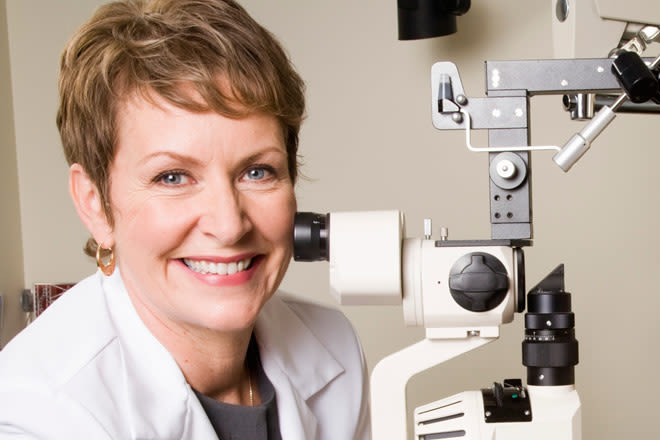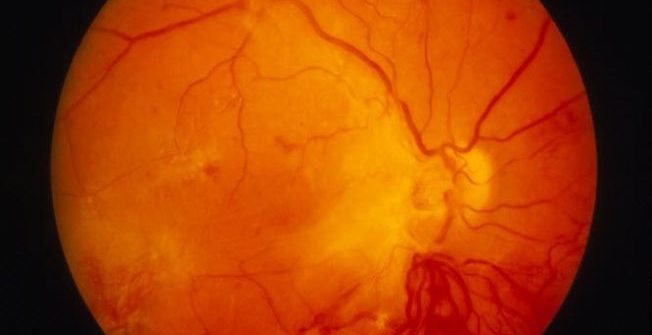The Greatest Guide To Eye Exam
Table of ContentsUnknown Facts About Eye Exam10 Easy Facts About Paediatric Ophthalmology ExplainedGetting The Amblyopia To WorkThe Best Guide To Amblyopia
Ophthalmologists are medical physicians who focus on the medical diagnosis as well as treatment of eye and also vision problems. What is the difference between an eye doctor and also an eye doctor, after that? What concerning lens? These 3 types of eye care specialists have instead similar-sounding names as well as overlapping task descriptions. It can be perplexing in the beginning look.They can not provide eye exams, create prescriptions, or identify or deal with eye problems. Offer eye exams, vision screening, and also prescriptions for glasses or call lenses.

Eye doctors detect and treat injuries, infections, illness, and conditions of the eye. Treatments can include medicine taken orally (by mouth) or topically (in the eye), surgical treatment, cryotherapy (freeze therapy), and also radiation treatment (chemical treatment). Ophthalmologists participate in medical school then get numerous years of specialized training in the medical and also surgical care of the eye.
Little Known Facts About Emergency Eye Problems.
As they are the only doctor that can treat all eye problems, eye doctors see a wide range of eye conditions, consisting of: Just how frequently should you have an eye exam? What are signs and symptoms that show you may have an eye problem that needs to be inspected by an ophthalmologist? The American Academy of Ophthalmology recommends: As youngsters's eyes are expanding as well as changing quickly, they should obtain a vision testing.
Grownups that have healthy eyes as well as outstanding vision should have 4 comprehensive eye examinations: one in their 20s, 2 in their 30s, and one at age 40. These appointments may permit the ophthalmologist to catch an eye condition or vision modifications beforehand. By the time you notice signs and symptoms, you might already have some vision loss (PAEDIATRIC OPHTHALMOLOGY).

People who are at a greater risk of eye disease may require to get an eye test much more typically. After age 65, your eyes need to be checked every one to two years.
Your view depends upon seeing the best ophthalmologist at the best time. When it's time to "obtain your eyes inspected," make certain you are seeing the ideal eye treatment professional for your requirements. Eye doctors, eye doctors as well as lens each play a vital duty in providing eye care to consumers. Yet the levels of training and also experience are rather different for each kind of carrier.
The 4-Minute Rule for Paediatric Ophthalmology

is a clinical or osteopathic physician that focuses on eye as well as vision treatment. Eye doctors vary from eye doctors and also opticians in their levels of training as well as in what they can detect and also treat (https://slides.com/drcrlinecatt). As a medical physician who has completed university and also at the very least 8 years of added clinical training, an ophthalmologist is licensed to practice medication as well as surgical treatment.
Numerous ophthalmologists are additionally involved in scientific study on the causes and treatments for eye diseases as well as vision disorders. SUBSPECIALISTS: EXTRA UNDERSTANDING AS WELL AS TRAINING FOR PARTICULAR EYE requires While eye doctors are trained to care for all eye problems and problems, some Eye M.D.s focus on a specific location of clinical or surgical eye care.
She or he normally finishes one or two years of added, a lot more extensive training called a fellowship in one of the major subspecialty areas such as glaucoma, retina, cornea, pediatrics, neurology as well as plastic surgery, in addition to others. This added training and expertise prepares an eye doctor look after more complex or particular conditions in certain areas of the eye or in particular groups of patients.
An eye doctor is not a medical physician. An optometrist gets a doctor of optometry (OD) level after completing four years of optometry school, preceded by three years or even more years of college. They are accredited to exercise optometry, which largely includes performing eye tests and vision examinations, suggesting as well as giving rehabilitative lenses, spotting certain eye problems, and prescribing medications for sure eye diseases.
Getting The Paediatric Ophthalmology To Work
They utilize prescriptions supplied by eye doctors or eye doctors, but do not check vision or write prescriptions for aesthetic adjustment. Lens are not permitted to identify or deal with eye diseases. We all depend on our vision in even more means that we might recognize. Without healthy and balanced vision, our ability to function, play, drive or also identify a face can be considerably affected.
That's why it is so vital to see an eye doctor for a total medical eye exam by age 40, as well as after that as frequently as prescribed by your Eye M.D.
A complete, clinical eye examination by an Eye M.D. could be the first step towards conserving your view. Bulging of one or both eyes; Dark curtain or shroud that blocks your vision; Lowered vision, also if momentary; Diabetic issues mellitus; Altered vision; Double vision; Excess tearing; Eyelid more problems; Family members background of eye disease; Halos (tinted circles around lights); High blood stress; HIV or AIDS; Injury to the eye; Loss of peripheral (side) vision; Misaligned eyes; New drifters (black "strings" or specks in the vision) and/or flashes of light; Pain in the eye; Thyroid disease-related eye problems (Graves' illness); Unusual red eye.